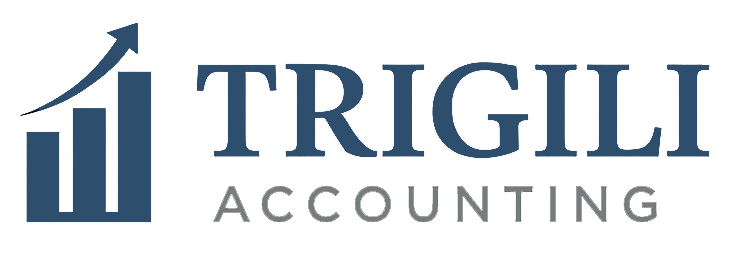Insights that matter
Expert tips, smart strategies, and practical advice
Whether you're managing a business or just trying to make sense of your taxes, our blog breaks down financial topics into clear, actionable content. Get fresh insights from Claudia and stay informed year-round.

Master Your Finances: The Importance of Tax Planning
Master Your Finances: The Importance of Tax Planning

Tax planning is a proactive habit that ties everyday financial choices to the tax rules that affect them.
When you anticipate taxable events, time income and deductions, and use tax-smart tools — like retirement accounts and credits — you turn uncertainty into predictable results that protect cash flow and support long-term goals. This article walks through why planning matters, the practical strategies that deliver measurable savings, how planning lowers compliance risk, and which 2025 rule changes could affect your options. You’ll find clear, actionable steps for personal and business planning, a year-round checklist to avoid penalties, and simple criteria for when to call a CPA. We use concise concepts, comparison tables, and checklists so you can compare options, prioritize actions, and start improving results right away. Along the way, we show how a local CPA-led advisory approach keeps planning practical and tailored without turning this into a technical deep dive.
Why Is Tax Planning Important for Reducing Your Tax Liability?
Tax planning lowers what you owe by using legal tools—deductions, credits, and timing—that shrink taxable income or increase offsets. Because taxable income, tax rates, and credits interact, shifting income between years, accelerating or deferring deductions, and capturing credits changes the tax base. Put simply: the better you plan, the more cash you keep now and the more capital you have for reinvestment or savings. Knowing which mechanisms move the needle helps you focus on high-impact actions instead of low-value tweaks that take time but return little benefit. Below we summarize the core mechanisms and show how each one translates into real tax savings.
Tax planning centers on these primary tax-reduction mechanisms:
Adjusting Taxable Income: Time income and deductions so more income is taxed in lower-rate years.
Claiming Tax Credits: Use credits that reduce your tax bill dollar-for-dollar, not just taxable income.
Using Tax-Advantaged Accounts: Contribute to retirement plans and HSAs to lower current taxable income.
These building blocks lead to higher-impact tactics — like retirement contributions or timing capital expenditures — which we compare in the next section.
Different mechanisms reduce tax through distinct pathways and measurable outcomes.
MechanismHow it Reduces TaxExample ImpactRetirement contributions (401k/IRA)Lowers taxable income in the contribution yearReducing AGI by $6,500–$7,000 can lower your marginal rate and save hundreds to thousands annuallyTax credits (child tax, education)Directly subtracts from tax owedA $2,000 credit reduces tax liability dollar-for-dollar by $2,000Business deductions and depreciationReduces business taxable income or accelerates write-offsExpensing capital purchases can cut taxable income significantly in the year of purchase
These examples show both how savings are produced and the typical scale of results — useful when you prioritize planning actions.
How Does Tax Planning Help Maximize Tax Deductions and Credits?

Maximizing deductions and credits starts with a systematic review of eligible items and the timing that makes them most valuable. For individuals that often means mortgage interest, charitable gifts, state and local tax choices, retirement and HSA contributions, and education credits — each requires documentation and timing to work. For businesses, capturing ordinary and necessary expenses, depreciation, and properly applying capitalization policies relies on consistent bookkeeping. A common tactic is “bunching” charitable gifts into one year to exceed the standard deduction and unlock itemized deductions. Building a quarterly checklist for deductions and credits improves capture rates and supports year-end projections — which leads into the section on the financial benefits of lower taxes.
What Are the Financial Benefits of Lowering Your Tax Burden?
Paying less tax increases cash flow today and, when reinvested, compounds into greater long-term wealth. Tax savings can fund retirement contributions, education accounts, or business reinvestment — each of which can compound returns over time. For example, reinvesting $3,000 a year at a 6% return for 25 years produces noticeably more retirement savings than spending the same amount. Lower taxes also reduce month-to-month cash-flow volatility, making budgeting and debt repayment easier and lowering the chance of underpayment penalties. Framing tax planning as part of your broader financial plan — not just a filing exercise — helps you capture those benefits.
What Are the Key Tax Planning Strategies for Individuals and Small Businesses?
Core strategies cluster around income timing, retirement and benefit accounts, entity and compensation choices for business owners, and how you treat capital expenditures. The right mix depends on filing status, income variability, and growth plans. You’ll want to weigh expected tax impact, compliance complexity, and cash-flow effects. Below are high-impact tactics for individuals and owners, followed by a compact comparison to help you decide which actions to prioritize. After reviewing these, consider whether a CPA-guided implementation fits your complexity and timeline.
Retirement contributions and catch-up planning: Max out 401(k), IRA, and catch-up options to lower taxable income while saving for retirement.
Utilize HSAs and education accounts: Use HSA and education accounts for tax-deductible contributions and tax-advantaged growth.
Timing income and expenses: Defer or accelerate income and deductions to smooth tax rates across years.
Business entity and compensation choices: Choose entity classification and compensation structures that make sense for tax and payroll goals.
Depreciation and capital expenditure planning: Apply section 179 and bonus depreciation intentionally when deciding when to buy assets.
These strategies often work together; for example, retirement contributions reduce AGI and can increase eligibility for other benefits. The table below maps strategies to typical beneficiaries and outcomes.
StrategyWho it Helps / MechanismExample OutcomeMaximize retirement contributionsIndividuals with earned income / reduces AGILower marginal tax rate and larger retirement savingsUse HSAs for medical savingsIndividuals with high-deductible plans / tax-free growthReduces taxable income and builds a tax-free medical reserveEntity selection and salary strategySmall business owners / tax classification affects self-employment taxPotentially lower overall tax through S‑corp distributions versus wagesDepreciation and section 179Small businesses buying assets / accelerates deductionsImmediate expense recognition lowers taxable profit in the purchase year
Using these strategies together usually delivers bigger results than pursuing them in isolation — which brings us to implementation.
For many taxpayers, aligning these moves with consistent bookkeeping and year-round projections improves both compliance and savings. If you want hands-on help, Trigili CPAs & Consulting offers tax planning services for individuals and small businesses; their approach turns strategy into a practical action plan and implementation timeline.
Which Tax Planning Strategies Are Most Effective for Individuals?
High-leverage strategies for individuals include maxing retirement accounts, using HSAs, making smart itemization choices, and timing capital gains and losses. Retirement contributions lower current taxable income and can reduce exposure to higher brackets. HSAs offer deductible contributions, tax-free growth, and tax-free qualified medical withdrawals. Strategically realizing gains and harvesting losses can offset tax and smooth liabilities across years. Married filers and those with variable income should model several scenarios — a simple projection of income, deductions, and contribution limits often shows which moves will pay off most.
What Tax Planning Approaches Should Small Business Owners Use?
Small business owners should focus on entity selection and payroll design, adopting retirement plans, and timing capital expenditures to manage taxes while preserving cash for growth. Entity choice affects self-employment tax and how income can be split between wages and distributions. A SEP or solo 401(k) can give owners immediate deductions and retirement savings. For asset purchases, consider how section 179, bonus depreciation, and 2025 depreciation percentages interact to decide whether to expense or capitalize. Consistent bookkeeping and regular tax projections let owners time purchases and payroll decisions for the best tax and cash-flow outcome.
How Does Proactive Tax Planning Improve Financial Stability and Compliance?

Proactive tax planning improves stability and compliance by anticipating liabilities, reducing surprises, and building tax-aware decisions into everyday accounting and cash-flow processes. Accurate forecasts and documentation lower the chance of underpayment penalties, filing errors, and audit attention while smoothing cash flow through estimated-tax planning. Businesses that combine accounting and tax planning avoid last-minute changes that disrupt operations and trigger interest or penalties. The next paragraphs explain how early planning prevents common IRS issues and how tax-aware cash-flow management works year-round.
Getting an early start on tax planning prevents common penalty triggers by ensuring withholding or estimated payments are sufficient, documenting deductible expenses, and aligning entity filings with owner obligations. Missed estimated payments and underwithholding are frequent penalty causes, but a quarterly review cadence tied to projected liabilities reduces that risk. Keeping clear records and reconciling accounts monthly creates an audit-ready trail that simplifies year-end reporting and supports defensible positions.
Tax planning also strengthens cash flow through scheduled tax estimates, thoughtful timing of deductible expenses, and aligning capital purchases with available cash and depreciation rules. Businesses can use quarterly projections to decide whether to accelerate expenses into the current year or delay them based on expected profitability and tax rates. Individuals with variable income can adjust withholding or make estimated payments to avoid underpayment penalties while keeping liquidity. A planning calendar helps make these decisions without sacrificing operational flexibility.
A practical year-round checklist turns planning into routine and lowers compliance risk:
Quarterly tax projection and review: Estimate liabilities, compare to withholding, and adjust estimated payments as needed.
Monthly bookkeeping reconciliation: Keep expenses and receipts correctly categorized so deductions are captured.
Annual retirement and benefits review: Maximize allowable contributions before year-end to secure tax advantages.
These steps create a continuous loop: reliable accounting enables timely tax choices. Next we look at how law changes in 2025 shift planning priorities.
Why Is Early Tax Planning Essential to Avoid Penalties and IRS Issues?
Early tax planning matters because many penalties—underpayment, missed filings, or worker misclassification—start with timing and documentation gaps during the year. A schedule for withholding reviews, estimated payments, and bookkeeping reconciliations catches problems long before filing deadlines. Proactive classification reviews and clear compensation records reduce audit risks and costly adjustments. Making these practices part of normal financial routines keeps compliance predictable and lowers resource strain during tax season.
How Can Tax Planning Enhance Cash Flow Management Throughout the Year?
Tax planning smooths cash flow by forecasting tax obligations, timing deductible expenses, and using tax-advantaged accounts when cash is tight. Simple tools — an annual tax calendar, estimated-tax worksheets, and rolling 12-month profit projections — help individuals and business owners schedule payments and purchases. For businesses, matching capital expenditures to months with stronger cash flow and using depreciation rules strategically avoids immediate liquidity stress. Pairing these tactics with reserve policies and short-term investment choices preserves operational flexibility and tax efficiency.
How Do Changing Tax Laws Impact the Importance of Tax Planning in 2025 and Beyond?
When laws change, planning matters more because the best strategies shift. What worked last year might not be optimal after new contribution limits or depreciation rules. In 2025, notable adjustments — such as higher retirement contribution limits and phased reductions in bonus depreciation — mean taxpayers should reassess priorities like retirement funding versus immediate expensing. Ongoing monitoring and updated models help you adjust retirement deferrals, timing of capital purchases, and credit claims to match the current rules. Below we summarize key 2025 changes and practical implications so you can translate rules into action quickly.
Pay particular attention to contribution limit increases and depreciation schedule changes because they often cause the biggest year-to-year shifts in planning tradeoffs. For example, higher retirement limits increase the value of prioritizing plan contributions, while reduced bonus depreciation encourages spreading deductions over multiple years. Understanding these interactions helps you decide which near-term moves matter most.
Law / RuleChange for 2025Practical Planning ImplicationRetirement contribution limitsHigher contribution ceilings for certain plansRecalculate retirement deferral capacity and prioritize contributions before year-endBonus depreciationReduced percentage relative to prior yearsRe-evaluate timing of asset purchases; consider section 179 versus spread-out depreciationSunsetting provisionsPhased changes from prior tax actsModel multi-year tax scenarios to avoid surprises and plan for sunsets
This table links rule changes to planning actions and supports the adaptive planning approach we describe next.
What Are the Key 2025 Tax Law Changes Affecting Tax Planning?
Key 2025 changes include higher retirement contribution limits, a lower bonus depreciation percentage for some asset classes, and continued phase-downs of temporary provisions from prior legislation. These changes alter the balance between immediate expensing and long-term deferral, so scenario modeling becomes important. Revisit retirement plan designs to capture higher limits and review capital expenditure plans with an eye toward depreciation timing. Regularly updating tax projections helps ensure today’s decisions stay aligned with the rules.
How Should You Adapt Your Tax Planning to New Contribution Limits and Depreciation Rules?
Adapting to 2025 rules means updating projections, shifting contribution strategies to use higher retirement ceilings, and testing depreciation choices for planned purchases. Individuals who can increase retirement contributions should consider doing so before year-end; business owners should analyze whether section 179 expensing or spreading depreciation gives the better after-tax cash flow. A practical timeline — evaluate in Q3 for late-year purchases and finalize in Q4 for retirement contributions — keeps actions timely and compliant. Those steps feed back into regular accounting and forecasting, supporting an integrated planning approach.
How Can Trigili CPAs & Consulting Support Your Tax Planning Needs?
Trigili CPAs & Consulting turns tax strategy into practical steps for individuals, small business owners, and growing companies — with an emphasis on clarity, education, and direct CPA access. Clients work with Claudia Gorostiaga, CPA, to develop plans tailored to cash flow and growth goals. The firm combines tax projections, entity reviews, retirement planning, and a judgment-free advisory style so clients understand the “why” and the “how.” At its heart, the practice aligns tax tasks with business rhythms so tax decisions support growth instead of disrupting it.
Showcase expertise, build trust, and invite contact for consultations and next steps.
Trigili CPAs’ tax planning services include practical deliverables and integrations that keep planning realistic and actionable. The list below highlights common services and the value each provides.
Tax projections and planning calendars: Regular forecasts to guide withholding and estimated payments.
Entity structure and review: Analysis to align entity choice with tax efficiency and business goals.
Retirement plan design advice: Guidance on plan selection and contribution strategies for owners and employees.
What Personalized Tax Planning Services Does Trigili CPAs Offer?
Trigili CPAs offers personalized tax planning that begins with a diagnostic review of filings and accounting practices to surface immediate opportunities and compliance risks. From there, the team builds a prioritized implementation plan with estimated tax impact, timing recommendations, and a calendar that fits your cash flow and growth objectives. Their judgment-free approach focuses on education so you understand why each recommendation matters and how to keep the benefit over time.
How Do Trigili CPAs’ Services Integrate with Accounting and Business Tax Preparation?
Trigili CPAs integrates planning with ongoing accounting and tax prep through regular financial reviews, bookkeeping reconciliations, and planning checkpoints that feed up-to-date numbers into projections. That workflow means recommendations are based on current financials, not historical guesses, and year-end tax positions reflect consistent record-keeping. For businesses, tying payroll, expense categorization, and capital purchase tracking into planning prevents surprises and aligns operations with tax-efficient timing. This integrated approach lowers compliance risk and makes tactical tax moves part of normal financial management.
What Are the Most Common Questions About the Importance of Tax Planning?
People often ask whether tax planning pays for itself, when to hire a professional, and which actions give the best ROI. Below are concise answers to the top questions, followed by brief explanations so you can act with clarity. If you want help implementing any of these ideas, Trigili CPAs & Consulting can turn strategy into a prioritized action plan.
Why should individuals and small businesses invest in tax planning?
Direct answer: Tax planning usually pays for itself when it uncovers savings or cash-flow improvements that exceed the cost of advice.
Elaboration: Structured planning reveals high-impact moves — like maximizing retirement contributions, correcting entity choices, or timing capital purchases — that often produce savings well above advisory fees. For example, a small business that optimizes depreciation and payroll strategy can lower taxable income in the implementation year, improving liquidity for reinvestment. Planning also cuts penalty risk and supports long-term wealth building, so it’s a risk-managed financial decision rather than a discretionary expense.
Is tax planning worth the time and cost?
Direct answer: For many taxpayers — especially those with variable income, business ownership, or major life events — professional planning provides net positive returns.
Elaboration: Consider professional help after income increases, business formation, major purchases, or when investments become complex. Simpler situations can often use disciplined DIY planning with an annual professional review. Ultimately, compare projected tax savings to advisory cost and factor in reduced compliance risk to decide. A CPA can also turn recommendations into a practical calendar and documentation checklist.
If you’re ready to move from strategy to execution, Trigili CPAs & Consulting can help convert these tactics into prioritized, implementable steps that match your cash flow and compliance needs.
Show your expertise, build trust, and encourage contact for consultations and services.
These answers highlight the main value of tax planning and help you decide when to act; the next step is to build a simple action plan based on your situation and timeline.
Income Tax Planning: A Crucial Strategy for Financial Stability
ABSTRACT: Reducing costs — including income taxes — supports a company’s efficiency and financial stability. This study examines the link between tax planning and financial-stability measures, finding net income is a significant predictor for metrics like return on net assets and return on equity. The research also shows income tax has a statistically significant relationship with return on assets, return on net assets, and return on equity. Modeling the effects of tax planning indicates a positive, significant impact on financial stability. Under the scenarios studied, lowering income tax materially improves profitability measures. The impact of tax planning depends on tax rates, pre-tax income, asset values, equity, and reserves, and therefore should be applied with those variables in mind. Income tax planning as a tool for achieving financial stability, 2022
Frequently Asked Questions
What are the common mistakes to avoid in tax planning?
Common mistakes include poor recordkeeping, missing contribution or payment deadlines, and overlooking available deductions and credits. Waiting until the last minute for planning often leads to missed opportunities and penalties. Regular financial reviews and organized documentation reduce those risks and improve the chances of capturing meaningful tax savings.
How can tax planning impact retirement savings?
Smart tax planning boosts retirement savings by maximizing contributions to tax-advantaged accounts such as 401(k)s and IRAs. Timing contributions and understanding account tax rules can lower taxable income now and create tax-efficient income in retirement. Knowing how different accounts and withdrawals affect your tax picture helps you make choices that align with long-term retirement goals.
What role does a CPA play in tax planning?
A CPA brings technical knowledge and practical judgment to tax planning. They identify tax-saving opportunities, ensure compliance, and craft strategies that fit your financial goals. A CPA also helps with documentation, complex tax rules, and how law changes affect future planning. Working with a CPA gives you a trusted partner for both strategy and implementation.
How often should individuals review their tax planning strategies?
Review tax strategies at least once a year, and more often after major life events such as marriage, a new job, or a business change. Quarterly check-ins are useful for people with variable income to keep withholding and estimated payments on track. Frequent reviews reduce surprises and improve tax outcomes.
What are the benefits of starting tax planning early in the year?
Starting early gives you time to identify deductions and credits, time purchases and income, and avoid last-minute rushes that lead to missed opportunities. Early planning improves cash-flow management and reduces stress as filing deadlines approach, helping you make informed, timely decisions.
How can tax planning improve cash flow management?
Tax planning improves cash flow by forecasting liabilities, timing deductible expenses, and using tax-advantaged accounts when needed. Forecasts and estimated-tax planning let you schedule payments and purchases so funds remain available for operations and investments. This proactive approach helps avoid unexpected tax bills and supports steadier budgeting.
What should small business owners consider in their tax planning?
Small business owners should evaluate entity structure, payroll and compensation strategies, and the timing of capital expenditures. The right entity choice affects tax liability and compliance; payroll design influences self-employment and payroll taxes. Thoughtful timing and depreciation choices for asset purchases maximize deductions. Regular reviews of financial performance and tax strategies keep businesses compliant and tax-efficient.
Clarity Starts with a Conversation
Whether you're behind on taxes, launching a business, or just need better financial guidance — you don’t have to figure it out alone. Trigili CPAs & Consulting is here to help.

How we can help you!
Why choose Trigili, CPA?
You have options when it comes to accounting help — but here’s what makes Trigili different, and why clients keep coming back.
I haven’t filed my taxes in a few years… is that going to be a problem?
Not at all. Trigili helps clients catch up without judgment. We'll walk you through what’s needed and get you back on track.
I’m starting a new business — do I need to form an LLC first, or wait?
Trigili can help you choose the best structure for your business before you make costly mistakes.
My books are kind of a mess. Is it too late to fix things before tax season?
It’s never too late. Whether it’s cleanup, catch-up, or ongoing support, We can help you get organized.
Do I really need a CPA, or can I just use tax software?
Software can’t ask follow-up questions — or catch things that could save you money. We bring clarity and strategy.
I’m self-employed — how do I know what I can write off?
Trigili specializes in helping freelancers and business owners keep more of what they earn, legally and confidently.
Will I be talking to Trigili directly, or just someone in the office?
You’ll work directly with Trigili. No bouncing around, no explaining your situation twice.
Can they help me plan ahead, not just react every year?
Yes — Trigili builds relationships, not just returns. Tax planning is a key part of what she offers.
Still have questions? let’s talk.

FOLLOW US
COMPANY
Copyright 2025. Trigili CPAs & Consulting. All Rights Reserved.

